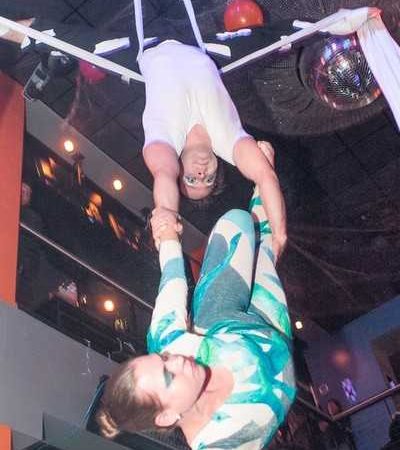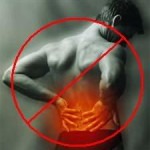
Sports Massage 3
Sports Massage: Research and Optimal Performance
Note from Cade:
Following is the third part of our Sports Massage Series from Massage Magazine
I laughed when I read the quote from the massage therapist featured in the article. He said, “I decided to go into sports massage when I experienced its effects on me as an athlete”, which is what I’ve been saying for years. As an athlete, I discovered how sports massage stay healthy, helped me recover, and heal fast, so I highly recommend it to everyone now; even if you are an “armchair athlete.”
Everyone needs their body to provide optimal performance, all day long.

Call me when you are ready to feel great in 2019.
(Full article from Massage Magazine)
Part 3 of Sports Massage
Who Should NOT Get a Sports Massage
Although sports massage can provide a number of great benefits for individuals who prefer to live an active life, there are some people for whom this type of massage is potentially unsafe.
According to the National Center for Complementary and Integrative Health (NCCIH), this includes individuals with bleeding disorders, low blood platelet counts, or those who are taking blood thinning medications. When these types of conditions are present, the NCCIH indicates that a sports massage with deep tissue work is generally not recommended.
The NCCIH adds that massage therapy may also be potentially harmful to women who are pregnant. Even though research has found that it offers this demographic some positive effects, such as decreased depression and anxiety and reduced leg and back pain, it is still important to obtain approval from her healthcare provider first to ensure that she can receive a safe sports massage.
Massage should also not be conducted in areas where there is cancer, a tumor or open wounds adds the NCCIH, as these can be potentially harmful to the client as well.
Research has also found that extra care should be taken by individuals with diabetes. In a systematic review published in Diabetes Spectrum, the authors share that, while massage has been found to offer benefits to individuals with this particular blood sugar condition, “massage at injection sites may increase insulin absorption.”
Some of the studies found that these effects can potentially continue for as long as 45 minutes post-massage.
The authors further indicated that massage not directed at the injection site should use continuous effleurage. And if gentle friction is applied to the lower extremities, this should only occur after “a sufficient amount of effleurage” (which they define as 7 to 10 treatment sessions) is conducted if diabetes-related nerve damage is present.
U.S. Pharmacist further warns that extra care should be taken when performing massage therapy on individuals who are on some type of analgesic or anti-inflammatory medication. Because their sense of pain is compromised, they may not be able to tell if the pressure is too much.
Why Specialize in Sports Massage Therapy?
Why might a therapist specialize in sports massage versus other types of massage? For some therapists, this type of massage provides some distinct and very rewarding benefits.
“I decided to go into sports massage when I experienced its effects on me as an athlete,” says McElroy. “Despite having no experience as a competitive runner in high school or college, I joined a team and realized I was pretty good. I trained while working full-time and ran my first marathon, missing the Olympic trial qualifying time by 21 seconds.
“To get to that level, I sought out sports massage. I experienced firsthand how important it is to optimizing performance,” McElroy adds.
For Pietrunti, an interest in sports massage began as part of his military experience. Serving as a Navy Chief Petty Officer where he was a fitness leader at various naval commands, Pietrunti says, “I began to look into corrective exercise to help my sailors and clients with athletic performance and pain management, but I felt that something was missing.”
Alhough he was a Certified Strength and Conditioning Specialist (CSCS) through the National Strength and Conditioning Association at the time, Pietrunti says that he ultimately decided to pursue licensure in massage therapy as well. This provided that missing link while also being “a good way to ‘bridge the gap’ and provide a better service to my clients,” he says.
A practicing powerlifter himself, Pietrunti’s fiancé is sports-focused as well as she is a record-holding strongwoman and bodybuilder, so he also uses the strategies he’s learned in sports massage within their social circle of competitive athletes.
Even in this less professional setting, he is still able to help fellow athletes who are “looking to increase their performance and deal with the aches and pains that come with consistent hard training.”
Waslaski shares that another benefit that he’s realized by specializing in sports massage is that it “opened the door to work with pro sports team.” That’s why he entered this field in the 1990s, he says. (Plus, it enabled him to go to Yankee games.)
There are several others he knows who have enjoyed this benefit as well, one of whom currently works with Cirque du Soleil athletes and makes six figures in this role.
Additional Training’s, Certifications and Modalities to Consider
When specializing in sports massage, there are a few additional trainings, certifications and modalities massage therapists may want to consider learning as practicing them can potentially take you higher in your field.
For instance, injury recovery and sports recovery techniques are critical in sports massage, says Waslaski.
Many elite level therapists have these additional trainings, making them more effective at serving their athletic patients. Learning good orthopedic assessment and clinical reasoning enables you to “match your technique to the pathology of the athletic injury,” Waslaski says.
Advanced skills in injury prevention and treatment can open more doors too, putting in in just the right position to  “work hand-in-hand with athletic trainers and medical staff,” he says.
“work hand-in-hand with athletic trainers and medical staff,” he says.
Alhough some massage therapists specialize in just one or two things, “diversity is key,” says Waslaski. It’s important to have effective evaluation skills for different biomechanics if you want to be truly successful, he says.
For instance, in baseball, the biomechanics of a catcher are different than those of a pitcher. Being knowledgeable in all of these various areas helps you provide a better service to the individuals and teams who come to you to become better players.
Additionally, Waslaski recommends that massage therapists interested in sports massage specifically “get trained by people who’ve done all these things.”
In other words, find a mentor with knowledge and experience in sports massage. Let that person help guide you through what you need to do, the steps you need to take to be a successful and effective sports massage therapist.
McElroy adds that, while she stays “pretty traditional in the therapy,” she does use compression and icing treatments on her athlete patients from time to time.
One narrative review in Open Access Journal of Sports Medicine explains that the impact of using these two modalities combined are somewhat inconclusive, mainly due to research limitations; however, after looking at 21 randomized controlled trials, the author ultimately concluded that “the effects of cold and static compression are clearly better than no treatment.”
Pietrunti shares that it has also benefited him to maintain his CSCS certification so he can help his clients by constructing and monitoring their exercise and conditioning routines.
He also provides his patients corrective exercise programming and other “homework” they can do in between sports massage sessions.
Pietrunti further states that his education in applied sport psychology also enables him to provide various consulting services for the athletes he sees. This includes performing services related to mindset training, visualization training, energization training, goal-setting training and performance coaching.
Would you like to read the first 2 parts? Click below
********************************
Cade provides the best sports massage in St. Paul and Minneapolis. For optimal health in the coming year call Cade for your massage: 612-269-2207
And it it’s easy to make massage a regular part or your great health plan: Become a member and you’ll save money while feeling great!